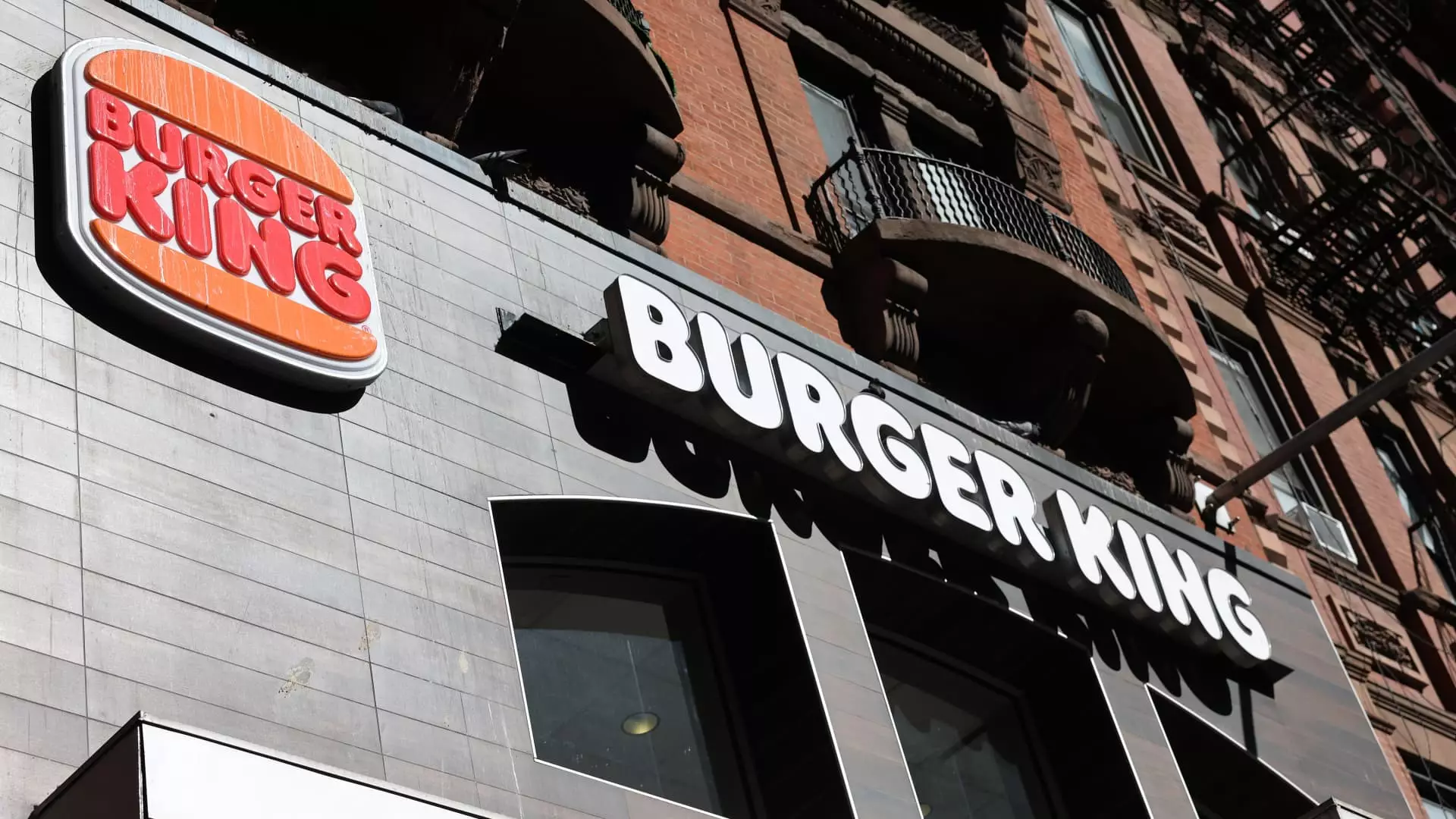Restaurant Brands International (RBI) recently reported its quarterly earnings and revenue, revealing what can only be described as a façade of success that masks deeper issues plaguing the company. The company’s revenue increased by 21% to $2.11 billion, attributing this gain to two of its brands: Popeyes and Firehouse Subs. However, digging deeper, it becomes evident that same-store sales, a critical metric indicating a company’s ongoing financial health, have taken a hit. Three of RBI’s marquee brands—Popeyes, Tim Hortons, and Burger King—all reported declines in their same-store sales. This stark contradiction raises questions about the sustainability of the company’s growth narrative. A one-time revenue bump does not equate to a thriving business model.
Consumers Are Turning Cautious
The decline in same-store sales across the board is alarming, particularly given the economic climate where consumers are being more mindful of their spending habits. Fast-food chains have endured challenges so far this year, with factors like unpredictable weather and a noticeably cautious consumer base weighing heavily on their performance. It’s revealing that RBI’s most significant brand, Tim Hortons, saw a 0.1% decline in same-store sales when analysts had anticipated a growth of 1.4%. Clearly, customers are voting with their wallets, and it’s not in RBI’s favor. In a world of increasing choices, these fast-food giants must reconsider their strategies to capture consumer interest rather than assume loyalty.
Transformation Turns Into Stagnation
With Burger King stuck in a turnaround strategy for over two years, the recent 1.1% decline in its U.S. same-store sales only further emphasizes the stagnation of a once-promising brand. The franchise has been striving to regain market share, but the lack of tangible results indicates a misalignment with consumer preferences. It’s not merely about slapping on a new marketing campaign; there must be genuine innovation in menu offerings and an authentic connection with customers. The transformational narrative is losing its credibility if the results continue to point in the opposite direction.
Popeyes: The Biggest Loser of the Quarter
Furthermore, the 4% decline in Popeyes’ same-store sales—the most significant drop among its peers—was a shocking revelation for investors. Wall Street had anticipated a decline of just 1.8%, which indicates a serious miscalculation and a failure to create consumer excitement. With chicken sandwiches flooding the market, differentiation is key, yet Popeyes seems to be fading into the background amid the competition. If RBI cannot revitalize this brand, it risks losing an essential part of its portfolio.
The Earnings Miss: The Icing on the Cake
Lastly, RBI’s adjusted earnings per share (EPS) of 75 cents fell short of the 78 cents expected, while their net income attributable to shareholders dropped from $230 million to $159 million year-over-year. When revenue struggles to translate into profits, investors’ confidence erodes quickly. Nothing illustrates this better than the more than 2% drop in shares during premarket trading following the earnings announcement. In a competitive marketplace, consistent performance can hardly be overlooked or brushed aside.
While RBI can boast about revenue increases, the underlying trends reveal a company teetering on the brink of stagnation. Investors and consumers alike must be wary of these alarming signs as they indicate a more profound, systemic challenge within this fast-food giant.

